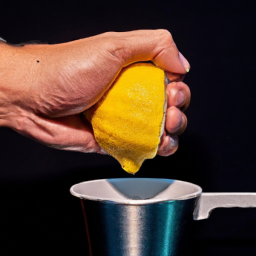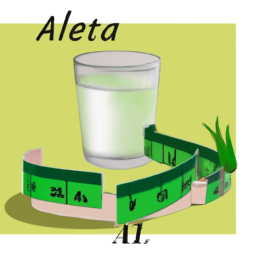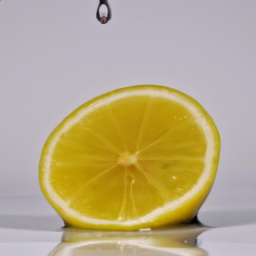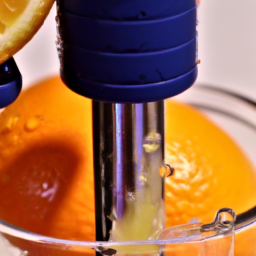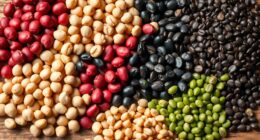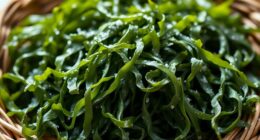When it comes to enjoying grapefruit, the amount of juice that can be squeezed from this citrus fruit can vary greatly. As someone who drinks grapefruit juice regularly, I often find myself contemplating how much juice one grapefruit is expected to provide.
Through research and experimentation, I’ve gathered information on the different grapefruit varieties, factors that affect juice content, and juicing techniques to answer the question of just how much juice is in one grapefruit.
Understanding the amount of juice in one grapefruit is not only useful for those who enjoy fresh squeezed juice, but it can also be helpful for recipes that call for grapefruit juice.
In this article, I’ll explore the different grapefruit varieties and their juice content, the factors that can affect how much juice is in a grapefruit, and the best juicing techniques to maximize juice yield. Additionally, I’ll discuss the benefits of grapefruit juice, how to store it, and how to choose the best grapefruit.
So let’s dive in and discover just how much juice we can expect to get from one grapefruit.
Key Takeaways
- The size, ripeness, and variety of grapefruit affect its juice yield.
- Fully ripe grapefruits are juicier than unripe ones, and Ruby Red and Marsh White are particularly juicy varieties.
- Medium-sized grapefruit yields 1/2 to 3/4 cup of juice and is packed with vitamin C and antioxidants.
- Grapefruit juice has health benefits such as aiding in weight loss and improving heart health, but it can interact with some medications, so consult a healthcare professional.
Overview of Grapefruit Varieties
There’s a wide range of grapefruit varieties, each with their own unique flavor profile. Some grapefruits are sweet and tangy, while others are more acidic and bitter. Depending on the variety, grapefruit can range in color from pale yellow to deep red.
Grapefruit is also known for its high nutritional value, containing large amounts of vitamin C, fiber, and antioxidants. When it comes to juice content, the variety of grapefruit is just one factor that can affect how much juice is in one fruit. Other factors include the age and ripeness of the fruit, as well as how it is stored and prepared.
Understanding these factors can help you get the most juice out of your grapefruit and ensure that you’re getting all of the nutritional benefits it has to offer.
Factors Affecting Juice Content
When it comes to the juice content of grapefruits, there are three main factors that come into play – size, ripeness, and juiciness. As someone who’s spent a lot of time studying citrus fruits, I can tell you that the size of a grapefruit can have a significant impact on how much juice it contains.
Similarly, the ripeness of the fruit and its overall juiciness are also key factors that can impact the amount of juice you can extract from it.
Size of Grapefruit
You can easily tell the size of a grapefruit just by holding it in your hand. Grapefruit size comparison is important when determining the amount of juice that can be extracted from each fruit. Generally, the larger the grapefruit, the more juice it will yield. However, it’s important to note that the nutritional value of different grapefruit sizes may vary.
A larger grapefruit may contain more vitamins and minerals than a smaller one, but it may also have a higher sugar content. When selecting a grapefruit for juicing, it’s important to consider the size that will best suit your needs. If you’re looking to extract a large amount of juice, then a larger grapefruit may be the way to go. However, if you’re looking for a grapefruit with a lower sugar content, then a smaller one may be more suitable.
It’s also important to consider the ripeness of the grapefruit, which will be discussed in the next section.
Ripeness of Grapefruit
As if selecting the perfect grapefruit wasn’t already enough of a challenge, now you get to play a guessing game with the ripeness too. Grapefruit ripeness is crucial in determining its taste and juiciness.
The ideal time to pick a grapefruit is when it feels heavy for its size and has a smooth, firm skin. The color of the skin is also an indicator of ripeness. A ripe grapefruit will have a yellowish-green hue, while an unripe one will be mostly green.
Taste preferences also play a significant role in choosing a ripe grapefruit. Some people prefer a sweeter taste, while others prefer a tangier taste. A ripe grapefruit will have a balance of both, with the sweetness increasing as it ripens further.
To ensure that you get the perfect grapefruit for your taste, it’s best to try a few different ones at different stages of ripeness. This will allow you to determine which one suits your taste buds best.
Moving on to the next section, the juiciness of grapefruit is just as important as its ripeness.
Juiciness of Grapefruit
Get ready to enjoy a refreshing burst of flavor with every bite – nothing beats biting into a juicy grapefruit! But not all grapefruits are created equal when it comes to juiciness.
In fact, the juiciness of grapefruits can vary greatly depending on the variety and ripeness of the fruit. When it comes to juiciness comparison, some grapefruit varieties are known for being particularly juicy, such as the Ruby Red and Marsh White varieties. These grapefruits have thin skins and are packed with juice, making them ideal for squeezing.
As for ripeness, grapefruits that are fully ripe tend to be juicier than those that are not quite ripe yet. Juiciness isn’t the only benefit of grapefruit – it’s also a great source of vitamin C and other nutrients.
Consuming grapefruit regularly has been linked to a variety of health benefits, including weight loss, improved heart health, and reduced risk of certain cancers. So, whether you’re looking for a juicy snack or hoping to reap the health benefits of grapefruit, this citrus fruit is definitely worth incorporating into your diet.
Now, let’s explore some juicing techniques to get the most juice out of your grapefruits.
Juicing Techniques
By using various juicing equipment and techniques, you can extract the most juice from a grapefruit. One of the most popular methods is using a citrus juicer, which can quickly and efficiently extract the juice from the grapefruit. If you don’t have a juicer, you can also use a manual hand juicer or a citrus reamer.
Simply cut the grapefruit in half, place it on the juicer, and press down to extract the juice. Another way to maximize the amount of juice you get from a grapefruit is by experimenting with flavor combinations. Grapefruit has a tart and slightly bitter taste, so adding sweeter fruits like oranges or pineapples can balance the flavors and make the juice more enjoyable.
You can also add herbs like mint or basil for a refreshing twist. By using these techniques, you can create a delicious and nutritious grapefruit juice that will leave you feeling energized and refreshed. So, how much juice can you expect from one grapefruit? Let’s find out in the next section.
How Much Juice in One Grapefruit?
I hope you found the previous subtopic on juicing techniques informative. Now, let’s focus on grapefruit juice. One question that often comes up is, "How much juice is in one grapefruit?"The answer depends on a few factors, such as the size of the grapefruit and the juicing method used. However, on average, a medium-sized grapefruit can yield between 1/2 to 3/4 cup of juice.
Aside from the amount of juice, grapefruit juice nutrition is also a hot topic. It is packed with Vitamin C, which is essential for a healthy immune system. It also contains antioxidants that can help fight against free radicals in the body. Additionally, grapefruit juice has been found to lower cholesterol levels and aid in weight loss. Interestingly, the best time to pick grapefruit is actually in the winter months, as they are in season and have a sweeter taste.
Now that we’ve discussed grapefruit juice nutrition and how much juice is in one grapefruit, let’s move on to the benefits of drinking this delicious juice.
Benefits of Grapefruit Juice
You’ll be pleased to know that sipping on sweet and tangy grapefruit juice can provide a plethora of health benefits for your body and mind.
Grapefruit juice is an excellent source of essential nutrients such as vitamin C, potassium, and fiber. These nutrients are essential for maintaining a healthy immune system, reducing inflammation, and promoting healthy digestion.
Aside from its nutritional value, grapefruit juice may also have potential side effects for certain individuals. For example, grapefruit juice can interact with some medications, including statins, which are used to lower cholesterol levels. It’s essential to consult with a healthcare professional before adding grapefruit juice to your diet to avoid any potential adverse effects.
In the subsequent section about using grapefruit juice, we’ll discuss the different ways you can incorporate this tangy juice into your daily routine.
Using Grapefruit Juice
When it comes to using grapefruit juice, there are a few ways that I like to incorporate it into my diet. First and foremost, I enjoy drinking it straight up for a refreshing and tart kick in the morning.
However, if I want to switch things up a bit, I like to mix it with other juices like orange or pineapple for a sweeter taste.
Lastly, I’ve found that using grapefruit juice in recipes can add a unique flavor profile to dishes like salads, marinades, and cocktails.
Drinking It Straight
If you’re looking to drink grapefruit juice straight, be aware that one grapefruit typically yields about 8-10 ounces of juice. To get the most juice out of your grapefruit, it’s best to use a citrus juicer or a handheld reamer. These methods ensure that you extract as much juice as possible, without wasting any of the fruit.
When drinking grapefruit juice straight, it’s important to consider its nutritional value. Grapefruits are high in vitamin C, potassium, and other important nutrients. However, they can also interfere with certain medications, so it’s important to talk to your doctor before drinking grapefruit juice regularly.
In the next section, we’ll explore how to mix grapefruit juice with other juices to create delicious and nutritious blends.
Mixing It with Other Juices
Mixing grapefruit juice with other juices can be a refreshing way to enjoy its nutritional benefits, even if you’re not a fan of its tart taste. One popular flavor combination is grapefruit and orange juice, which creates a sweet and tangy flavor. Another option is mixing grapefruit juice with pineapple or cranberry juice for a tropical twist. Adding a splash of lemon or lime juice can also enhance the overall flavor profile.
Aside from its taste, mixing grapefruit juice with other juices can also provide additional health benefits. For example, combining grapefruit juice with carrot juice can increase the amount of vitamin A and antioxidants in your drink. Mixing it with beet juice can provide a boost of iron and potassium.
Overall, experimenting with different flavor combinations can not only make grapefruit juice more enjoyable to drink, but can also provide a variety of nutritional benefits.
Transitioning into the next section, using grapefruit juice in recipes can also be a great way to incorporate its health benefits.
Using It in Recipes
You can easily incorporate grapefruit juice into your meals by using it as a marinade or dressing for your favorite proteins and salads. Combining grapefruit juice with other ingredients such as honey, ginger, and soy sauce can create a flavorful marinade for meats like chicken and pork.
Grapefruit juice also makes for a refreshing dressing when mixed with olive oil, garlic, and herbs for salads. Grapefruit juice cocktails are another way to incorporate this citrus fruit into your diet.
Mix it with vodka and a splash of cranberry juice for a refreshing Greyhound cocktail, or blend it with tequila and lime juice for a tangy Paloma. The possibilities are endless when it comes to creating grapefruit juice cocktails, making it a versatile ingredient for any occasion.
Speaking of occasions, the next step is to learn how to store grapefruit juice to make sure it stays fresh for your next recipe.
Storing Grapefruit Juice
Storing grapefruit juice is easy as it can stay fresh for up to a week when refrigerated. You can also freeze the juice in an airtight container or ice cube tray to extend its shelf life. Make sure to label the container with the date of freezing when using an ice cube tray. The frozen grapefruit juice cubes can be added to drinks or used in recipes later on.
If you prefer a sweeter taste, you can add natural sweeteners like honey, agave, or stevia to your grapefruit juice. However, adding sweeteners can affect the shelf life of the juice, so make sure to consume it within a few days.
Overall, storing grapefruit juice is a simple process that can be done in a variety of ways to maintain its freshness and taste. Now, let’s move on to selecting the best grapefruit for juicing.
Choosing the Best Grapefruit
When it comes to selecting the best grapefruit for juicing, it’s important to look for certain qualities that will ensure a delicious and refreshing drink.
First and foremost, choose a grapefruit that feels heavy for its size, as this indicates it’s full of juice. Look for a smooth, firm and blemish-free skin, with a bright yellow or pink color. These are signs of a ripe and flavorful grapefruit. Also, give it a gentle squeeze to check for firmness. A grapefruit that yields slightly to pressure is likely to have more juice than one that’s too hard or too soft.
Aside from taste preferences, there are also health benefits to consider when selecting a grapefruit. Grapefruits are high in Vitamin C and antioxidants, which can help boost your immune system and protect against cellular damage. They’re also low in calories and high in fiber, making them a great addition to a balanced diet.
When juicing, it’s best to use freshly squeezed grapefruit juice as opposed to store-bought juice, which can contain added sugars and preservatives that can negate any potential health benefits.
As we move on to the subsequent section about common grapefruit myths, it’s important to note that selecting the right grapefruit is just the first step in achieving a delicious and healthy juice.
Common Grapefruit Myths
I want to discuss some common grapefruit myths that I’ve come across. Firstly, there’s a belief that grapefruit interacts with medications and can cause adverse effects.
Secondly, grapefruit is often touted as a weight loss aid, but there isn’t enough evidence to support this claim.
Lastly, there are other misconceptions surrounding grapefruit, such as its ability to cure certain diseases and its impact on cancer.
Let’s explore these myths in detail to separate fact from fiction.
Interaction with Medications
Combining grapefruit with certain medications can cause dangerous interactions, so it’s important to always check with your doctor or pharmacist before consuming it.
Grapefruit drug interactions can occur with a variety of medications, including those used to treat high blood pressure, cholesterol-lowering medications, and antidepressants. When grapefruit is consumed, it can interfere with the enzymes responsible for breaking down these medications in the liver, leading to higher levels of the medication in the bloodstream.
This can potentially lead to serious side effects, including muscle damage, kidney failure, and even death in some cases. It’s important to note that not all medications are affected by grapefruit, and the severity of the interaction can vary depending on the medication and the individual.
However, it’s always better to err on the side of caution and check with a healthcare professional before consuming grapefruit or grapefruit juice if you are taking any medications. With the potential side effects of grapefruit drug interactions in mind, it’s important to move on to the next section and explore the weight loss claims associated with grapefruit.
Weight Loss Claims
To fully understand the weight loss claims associated with grapefruit, it’s important to approach the topic with a critical eye. The effectiveness debate surrounding grapefruit and weight loss centers on the idea that the fruit contains enzymes that can help burn fat. However, scientific evidence supporting this claim is limited and mixed.
While some studies have found a correlation between grapefruit consumption and weight loss, others have found no significant effects. It’s also important to consider that simply adding grapefruit to one’s diet is not a guaranteed way to lose weight. Weight loss is a complex process that is influenced by a variety of factors, including overall diet and exercise habits. While grapefruit may be a healthy addition to a balanced diet, it’s not a magic solution for weight loss.
With this in mind, it’s important to approach any weight loss claims associated with grapefruit with a critical eye and to consult with a healthcare professional before making any significant changes to your diet or exercise routine.
Moving on to other misconceptions about grapefruit, it’s important to address the topic of grapefruit’s impact on medication efficacy.
Other Misconceptions
You know what they say about grapefruit and medication interactions, but the truth is that not all medications are affected by grapefruit and not all grapefruit products have the same effect. While it’s true that grapefruit can interfere with some medications, such as those used to treat high blood pressure, it’s not a concern for all medications.
It’s always important to check with your healthcare provider before consuming grapefruit or grapefruit products if you’re taking any medications.
Apart from its potential interaction with medications, grapefruit has a lot of nutritional value and health benefits. Grapefruit is a rich source of vitamins A and C, potassium, and fiber. It’s also low in calories, making it a great addition to any weight loss diet.
Grapefruit has been shown to improve heart health, lower cholesterol levels, and reduce the risk of certain types of cancer. Additionally, grapefruit can improve digestion and boost the immune system.
So, while grapefruit may not be suitable for everyone, it’s undoubtedly a nutritious and beneficial citrus fruit for those who can consume it safely.
Frequently Asked Questions
Can grapefruit juice be used in cooking or baking?
I’ve found that grapefruit juice can add a unique, tangy flavor to both sweet and savory dishes. Juicy recipes include marinades, dressings, and even desserts. Additionally, exploring the flavor profile of grapefruit juice in cocktails can be a fun and refreshing twist.
What is the best time of day to consume grapefruit juice?
Based on the nutritional value and absorption rate, the best time to consume grapefruit juice is in the morning. However, there are benefits and drawbacks to drinking grapefruit juice, such as potential interactions with medications.
Is it safe to consume grapefruit juice while taking certain medications?
As someone who values their health, it’s crucial to consider medication interactions before consuming grapefruit juice. However, it’s important to note that grapefruit juice has numerous nutritional benefits that should not be overlooked.
How long does it take for grapefruit juice to go bad?
Grapefruit juice can last up to 2 weeks in the refrigerator before going bad. Consuming it daily can provide health benefits such as improved digestion and lower risk of chronic diseases.
Are there any potential side effects of consuming too much grapefruit juice?
I researched the potential risks of consuming too much grapefruit juice. It can interact with medications, causing adverse effects. However, grapefruit juice can aid in weight loss when consumed in moderation.
Conclusion
In conclusion, I was amazed by the amount of juice in one grapefruit when I tried juicing it myself. The yield can vary depending on the variety, size, and age of the fruit. However, by using the right juicing technique and choosing the best grapefruit, you can maximize the juice content and enjoy all the health benefits that come with it.
Grapefruit juice is packed with vitamins, antioxidants, and other nutrients that can boost your immune system, aid digestion, and even help with weight loss. It can be consumed on its own or as a mixer in cocktails and other beverages.
Just make sure to store it properly in airtight containers to preserve its freshness and flavor. Don’t fall for grapefruit myths and give this citrus fruit a chance to brighten up your day and improve your health.
Ilana has been a vegan for over 10 years. She originally made the switch for health reasons, but soon found herself becoming more and more passionate about the ethical and environmental implications of a vegan lifestyle. Ilana is the author of The Graceful Kitchen, a blog all about veganism. She loves to cook up delicious and nutritious vegan meals, and share her recipes with others who are interested in leading a cruelty-free life. Ilana is also a strong advocate for using whole foods as the foundation of a healthy diet, and believes that going vegan is one of the best ways to achieve this.

